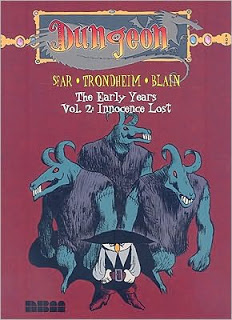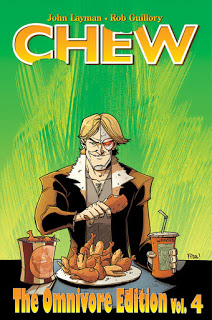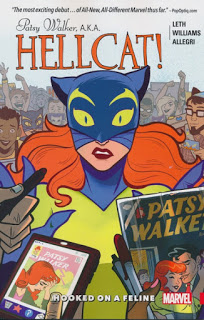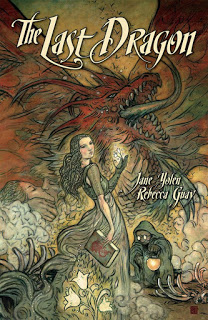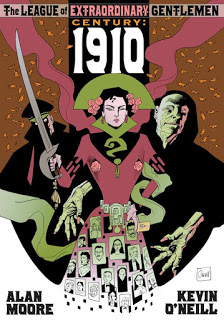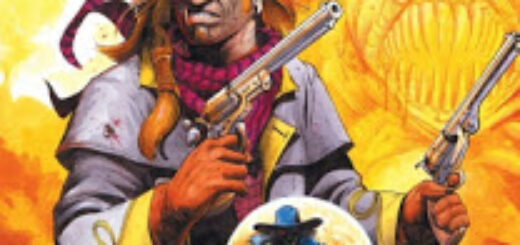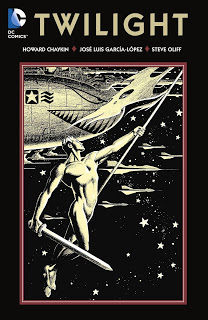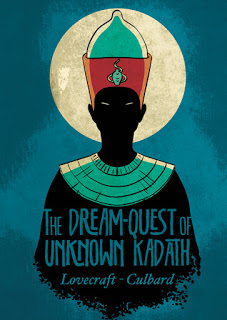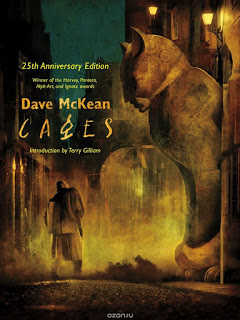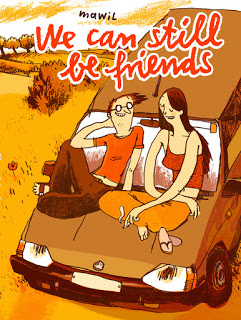Book-A-Day 2018 #153: Dungeon: The Early Years, Vol. 2: Innocence Lost by Joann Sfar, Lewis Trondheim, & Christophe Blain
Dungeon Fortnight #2
Hyacinthe was still basically an innocent at the end of the two albums collected in The Night Shirt, but the back half of the Early Years sub-series, collected in the English-language book Innocence Lost , definitively turns him into the older, cynical Keeper that we see in Dungeon Zenith. He starts off still as the somewhat deluded and not-particularly-effective nocturnal vigilante The Night Shirt, but keeps learning the world has greater and greater depths of suffering and venality and nastiness than he ever expected.
Even what he thought would be his triumphant moment — saving his love, the assassin Alexandra, and falling into bed with her — is sordid and twisted. This is the point in the long Dungeon series when that Gallic fatalistic philosophy really starts to kick in: that the world is horrible and will never be right, and that random events toss us around, no matter what we want.
That’s the story of the first book collected here — Une Jeunesse Qui S’Enfuit, as it was in French — which follows immediately on the stories in The Night Shirt. Hyacinthe is getting somewhat better at his vigilante activities, but he’s continually stymied at the difference between how he expects the world to be and how it actually is. The first few pages show that brutally: he can find and defeat criminals, but can’t return the money they stole to the random people it was stolen from, or even give it to an orphanage successfully. And then he goes to woo Alexandra again, becoming fully a part of her world in ways he never expected.
By the end of that story, Hyacinthe has become the man who will be the Keeper eventually: he’s finally had it beaten into him how Terra Amata really works, and he can make that world work for him. We see him get more and more confident as the story goes on, as more and more of his illusions are broken and he finally learns to take the cynical, horrible world as it comes.
It’s a tragedy, if you like. Hyacinthe is the only major character in all of the Dungeon books who ever tried to do good altruistically. And he only succeeds in any of his aims once he gives up on that forever.
The second book here is After the Rain (Apres La Pluie in French; it actually has an inter-title to give it an English title, which not all of the Dungeon books do), which takes place several years later. It’s set in the immediate aftermath of the Monstres story Heartbreaker, but, if we’re reading in this order, we don’t know that yet. We begin with Hyacinthe at the grave service of his wife, Elise, who was just assassinated.
The roles have switched: Alexandra is now chasing Hyacinthe, and she’s trying to stop the construction of the subway under the city for Hyacinthe’s old professor, Philip Cormor, as a way to get back Hyacinthe. That subway will make a lot of money for Hyacinthe and his partners, but it’s also likely to completely undermine Antipolis and destroy the city. But since when does anyone in Terra Amata think about problems tomorrow when they can get something they want today?
It’s not as simple as convincing Hyacinthe. It’s not even as simple as getting him, as the Night Shirt, to threaten all of the government officials. And Hyacinthe both wants Alexandra — or his idea of Alexandra — and isn’t ready to actually be with the real woman she is. So it all goes wrong: Hyacinthe is seriously injured and becomes suicidal. Work on the subway begins again. It all goes to hell.
In the end, Hyacinthe is in the Dungeon, surrounded by his monsters. It’s a happy ending, I suppose: his wife is dead, his city is destroyed, the Assassin’s Guild he ran shattered, but he’s back home and in a stronger position than ever.
Like the first volume, this is written by the creators of Dungeon, Joann Sfar and Lewis Trondheim, with art by Christophe Blain. These are dark stories, taking place on rainy rooftops and dark rooms and caverns far beneath Antipolis, and Blain is very good at darkness and sudden violent action. He has the knack of drawing enough to show a whole world without drawing every last detail — some of the Dungeon artists to come will be more detailed, or less. Blain was a good choice for the stories set in crowded, noisy, messy Antipolis; others will do equally good work for different places and times.
I see I’m not talking about the humor much yet: these books are funny, and some sections even comic — but Early Years has a humor more sardonic than joking, and a tone like whistling past the graveyard.
![]()
![]()
Reposted from The Antick Musings of G.B.H. Hornswoggler, Gent.

